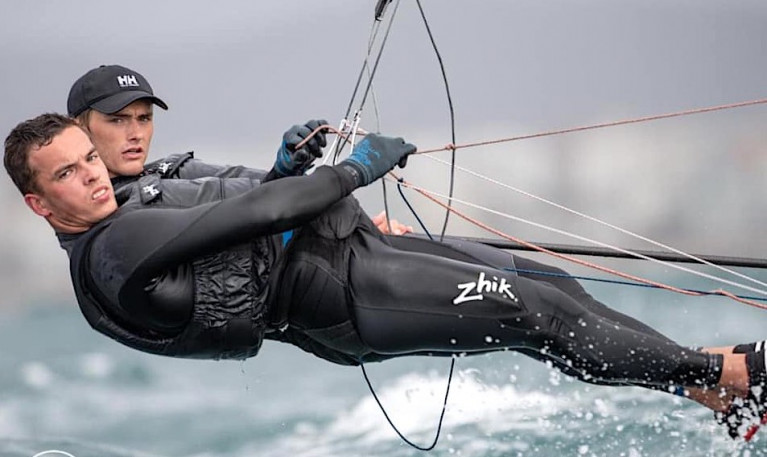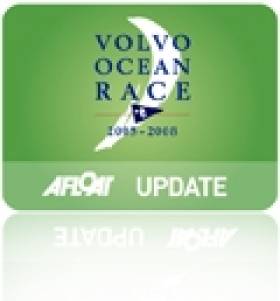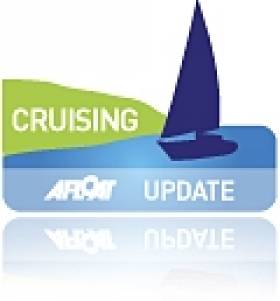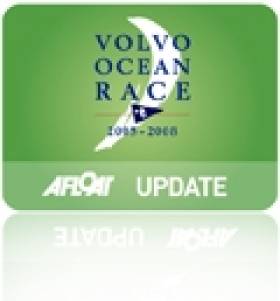Displaying items by tag: Lanzarote
International RORC Transatlantic Fleet Gather in Lanzarote
The Royal Ocean Racing Club (RORC) starts the racing season for 2024 with the 10th anniversary edition of the RORC Transatlantic Race, starting from Lanzarote on the 7th January 2024.
The RORC Race Team have set up in Marina Lanzarote before the start, carrying out safety inspections and assisting all the teams with their preparations for the race.
“The RORC Transatlantic Race is a World Sailing Offshore Special Regulations Category One Race,” commented RORC Racing Manager Steve Cole. “All of the competing boats and crew will need to comply with the requirements of the race and the RORC Race Team will carry out pre-race inspections. Safety at sea always comes first in any RORC Race; we know the calibre of this fleet and we are not expecting any big issues. However, the checklists and the dialogue with the teams is a great way to pinpoint any matters that need to be addressed, and also gives the RORC valuable feedback about Special Regulations for the future.”
The official entry list boasts 22 teams flying the flags of eight different nations, crewed by sailors from 20 different countries. France has the most admissions with eight boats and 43 French nationals racing in the RORC fleet. Entries are also in from Austria, Great Britain, Germany, Monaco, the Netherlands, Switzerland, and the United States of America.
2024 Entries & Expressions of Interest are here
 The Famous Project's Limosa, helmed by Alexia Barrier, will be one of the three MOD70s lining up at the start of the RORC Transatlantic Race Photo: Marie Cortial
The Famous Project's Limosa, helmed by Alexia Barrier, will be one of the three MOD70s lining up at the start of the RORC Transatlantic Race Photo: Marie Cortial
Four Multihulls will be in contention for race honours with three MOD70s as favourites for Multihull Line Honours. Erik Maris’ Zoulou (FRA), Jason Carroll’s Argo (USA), and Alexia Barrier’s Limosa (FRA) will fight for the accolade of being the first to finish the race. The trio of MOD70s will have one eye on the Multihull Race Record of 05 days 05 hrs 46 mins 26 secs, set last year by Giovanni Soldini’s Maserati Multi70 (ITA). Adrian Keller's Nigel Irens-designed 84ft catamaran Allegra (SUI) is the largest multihull in the race and favourite for the MOCRA Class after time correction. Allegra has won the MOCRA Class for the last two editions of the Rolex Fastnet Race, and twice for the RORC Caribbean 600.
 Jason Carroll’s MOD70 Argo (USA) Photo: Carlo Borlenghi
Jason Carroll’s MOD70 Argo (USA) Photo: Carlo Borlenghi
 Erik Maris’ MOD70 Zoulou (FRA) Photo: James Tomlinson
Erik Maris’ MOD70 Zoulou (FRA) Photo: James Tomlinson
 Adrian Keller's Nigel Irens-designed 84ft catamaran Allegra (SUI) is the largest multihull in the race Photo: Arthur Daniel
Adrian Keller's Nigel Irens-designed 84ft catamaran Allegra (SUI) is the largest multihull in the race Photo: Arthur Daniel
Six Maxi yachts will be vying for the overall win under IRC and the IMA Transatlantic Trophy for the first Maxi to finish the race. The Farr 100 Leopard 3 (MON), skippered by Chris Sherlock is the favourite to take Monohull Line Honours. Given the right conditions, Leopard 3 can threaten the Monohull Race Record set by Comanche in 2022 of 07 Days 22 hrs 01 min 04. Returning to the race is Jean-Pierre Dreau’s Mylius 60 Lady First III (FRA) which is the holder of the Yacht Club de France Trophy. The Bill Trip designed Swan 78 Valkyrie (FRA), sailed by Hubert Wargny will be competing for the second time, having completed the race in 2015 in an elapsed time of 12 days 07 hours 54 mins 03 secs.
 Jean-Pierre Dreau’s Mylius 60 Lady First III (FRA) Photo: Arthur Daniel
Jean-Pierre Dreau’s Mylius 60 Lady First III (FRA) Photo: Arthur Daniel
 Swan 78 Valkyrie (FRA), sailed by Hubert Wargny Photo: Arthur Daniel
Swan 78 Valkyrie (FRA), sailed by Hubert Wargny Photo: Arthur Daniel
 Farr 100 Leopard 3 (MON), skippered by Chris Sherlock
Farr 100 Leopard 3 (MON), skippered by Chris Sherlock
Three round the world racing yachts will be competing this year, Johannes Schwarz has entered two former Volvo 70s. The Reichel Pugh 70 Green Dragon (NED) will be skippered by Benedikt Clauberg, and Johannes Schwarz will skipper his 70ft Farr design Ocean Breeze (NED). The trio of round the world racing yachts is completed by the VO65 Sisi (AUT) skippered by Oliver Kobale. All three boats have pro-am crews with a melting pot of sailors from all over the world.
From France and the USA, four yachts between 50 and 60ft (15.24m-18.29m) will be competing. The largest of this group is Bernard Giroux’s Cannes-based Solaris 55 TEAM 42 (FRA), co-skippered by Dan Segalowicz. The highest IRC rating of the group is Chris Sheehan’s PAC52 Warrior Won (USA), which was third overall in the 2023 Rolex Fastnet Race and won the 2022 RORC Caribbean 600. Collin Mulry will skipper Mikhail Malamud’s ClubSwan 50 Pimu (USA). Jean-Francois Guillon’s Solaris 50 Sea-Nergy (FRA) is from the Société Nautique de Marseille.
Two Class40s of similar performance will be racing to Grenada in a duel for the Class40 title. The Ker designed Concise 8 (FRA) is now under the ownership of Charles de Coquet, with Briton Guy Waites as co-skipper. Marc Lepesqueux’s Sensation Extreme (FRA) is designed by Sabrosa Rain and he has competed in two previous editions in an earlier design, including the very first race in 2014. Both Class40s intend to compete in the 2023 RORC Caribbean 600.
 Reichel Pugh 70 Green Dragon (NED) will be skippered by Benedikt Clauberg Photo: James Mitchell
Reichel Pugh 70 Green Dragon (NED) will be skippered by Benedikt Clauberg Photo: James Mitchell
 Chris Sheehan’s PAC52 Warrior Won (USA) Photo: Robert Hajduk
Chris Sheehan’s PAC52 Warrior Won (USA) Photo: Robert Hajduk
 Johannes Schwarz will skipper his 70ft Farr design Ocean Breeze (NED) Photo: Robert Hajduk
Johannes Schwarz will skipper his 70ft Farr design Ocean Breeze (NED) Photo: Robert Hajduk
 Third RORC Transat for Marc Lepesqueux - this year with his Class40 Sensation Extreme (FRA) Photo: Orlando Romain
Third RORC Transat for Marc Lepesqueux - this year with his Class40 Sensation Extreme (FRA) Photo: Orlando Romain
Six teams under 50ft (15.24m) will be racing, and while they have little or no chance of taking Line Honours, the overall winner of the RORC Transatlantic Race is decided by IRC time correction. All of the smaller entries have an equal chance of lifting the RORC Transatlantic Race Trophy and two boats under 50ft have won overall in the past. The largest of this group is Hanno Ziehm’s Marten 49 Moana (GER), the smallest is Gavin Howe’s Sun Fast 3600 Tigris (GBR), which will be raced double-handed with Maggie Adamson.
Andrew & Sam Hall’s Lombard 46 Pata Negra (GBR) won IRC One in 2023 and was second overall in 2019. New to the race is the J/122 Moana (NED) sailed by Michelle Witsenburg and Frans van Cappelle. The J/122 Moana was second in class in the 2023 Rolex Middle Sea Race. Two JPK 1180s will be in action; Ed Bell’s Dawn Treader (GBR) was the winner of IRC One for the 2023 RORC Season’s Points Championship, and the highly experienced Richard Fromentin will race his JPK 1180 Cocody (FRA).
 Gavin Howe will be racing Two-Handed with Maggie Adamson in his Sun Fast 3600 Tigris (GBR) Photo: Paul Wyeth
Gavin Howe will be racing Two-Handed with Maggie Adamson in his Sun Fast 3600 Tigris (GBR) Photo: Paul Wyeth
 Andrew & Sam Hall’s Lombard 46 Pata Negra (GBR) Photo: Arthur Daniel
Andrew & Sam Hall’s Lombard 46 Pata Negra (GBR) Photo: Arthur Daniel
 Ed Bell’s JPK 1180 Dawn Treader (GBR) Photo: Kurt Arrigo
Ed Bell’s JPK 1180 Dawn Treader (GBR) Photo: Kurt Arrigo
A full programme of social events in Lanzarote starts on the 3rd of January with the Welcome Cocktail Party at Karma Rooftop, Marina Lanzarote. The 4th of January is the date for the ever popular Wine & Cheese Party held in Marina Lanzarote. A regular feature of the RORC Transatlantic Race is the Lanzarote Sailing School visit, where young local sailors can get on board the competing boats, experience the set-up of boats big and small, and meet the sailors. On the 5th of January, The RORC Transatlantic Race Gala Dinner will be held at the El Aljibe Del Obispo, a unique restaurant inside the Stratvus Winery located next to the Timanfaya National Park.
“The social events are an important part of the RORC Transatlantic Race experience; a great opportunity for all the sailors to meet each other before the race start and for the community in Lanzarote to benefit from the race,” commented RORC CEO Jeremy Wilton. “The Gala Dinner is generously provided by Calero Marinas and spectacular doesn’t do it justice; it’s the big get-together before the race, the food and the surroundings are always outstanding and every team is invited to have their team photograph before racing across the Atlantic. The Royal Ocean Racing Club wish all competitors a safe and fast RORC Transatlantic Race.”
The RORC Transatlantic Race is part of the RORC Season’s Points Championship, the world’s largest offshore racing series. For more information: www.rorctransatlantic.rorc.org
Hero to Zero and Back in Lanzarote for Day 2 of 44Cup
Conditions off Lanzarote’s moonscape south coast took on a different character for day two of racing in the 44Cup Calero Marinas Lanzarote on Friday (19 November) with much improved sailing conditions — albeit with the 8-12 knot wind blowing either along or off the shore.
To make up the schedule, four races were planned at the beginning of the day and four races were delivered. This was made hard as the wind veered through 90 degrees over the course of the afternoon, and that four races could be held was at least in part thanks to the 44Cup’s recently adopted use of MarkSetBots.
These remote-controlled robot sailing marks can — when required, as they were repeatedly today – speed across the seas to realign the course and keep it fair. (Afloat.ie has more on the MarkSetBot HERE.)
For most, the day was one of mixed fortunes, none more so than Pavel Kuznetsov’s Atom Tavatuy on which Evgeny Neugodnikov calls tactics. In the day’s first race the Russian team nailed the right, Lanzarote side of the first beat, which proved a winning move.
The Russian team went on also to claim the third race, but punctuated their otherwise excellent day with seventh and eighth placed finishes.
“It was a tough day,” Neugodnikov said. “We had a great start to the day. In the first race, we expected the right shift and there was more pressure also. It started at 205 degrees, and shifted to 225.
 The 44Cup fleet racing against the stark backdrop of Lanzarote | Credit: Martinez Studio/44Cup
The 44Cup fleet racing against the stark backdrop of Lanzarote | Credit: Martinez Studio/44Cup
“I am not happy with our fourth race because we were fifth or sixth but we made a mistake and missed the layline which left us last at the top mark and at the bottom gate. But our two wins — it is much better than not having two wins!
“In the first we were fighting with Aqua and the second time we were fighting with Ceeref at the top mark… and we won. So, it is not bad, but it should be much better.”
This was similarly the case for Igor Lah’s CEEREF powered by Hrastnik 1860 which, after a long fight with Chris Bake’s Team Aqua, came home first in the day’s second race. On a roll, the Slovenian team followed this with a second in the third race only to bookend these with an eighth and a seventh.
“It was a mixed day,” Lah said. “We missed one shift in the last race. We are trying to climb up. We were surprised to see we are still third. Lanzarote is brilliant — it is warm with nice conditions. We expected more wind, but we will play with what we have got."
44Cup newbie and sole female helm, Valeriya Kovalenko on ARTTUBE — sailing only her second event in the 44Cup — continues to punch above her weight with her crew, many of whom once competed aboard RUS7.
Incredibly, at this halfway stage of the 44Cup Calero Marinas Lanzarote, ARTUBE lies mid-leaderboard, in fifth place overall, ahead of several very much more experienced teams.
But for a second day, the stand-out performance was that of Team Aleph, on which highly experienced Italian owner-driver Alessandro Rombelli is standing in for Hugues Lepic — and whose crew features Dun Laoghaire’s Cian Guilfoyle.
Scoring a 2-4-4 in the day’s first three races, they were already top scorer of the day, but they then sealed the deal with a bullet in the final race.
“He has been driving very well and also the guys have been trimming the sails — all the crew work was flawless,” Team Aleph tactician Michele Ivaldi said. On the day’s racing, he added: “We managed to always start in a good position where we could play the first shift and if you are in phase everything gets easier.”
Team Aleph now holds a useful four-point lead over Team Aqua going into this weekend. Chris Bake’s World Champions in turn are six in front of CEEREF — a key situation as Igor Lah’s team represents their main threat for the overall 44Cup title for 2021.
But as Lah puts it, in this fleet “anything can happen. Everything is so close that if you make one mistake then you are behind. But that works in both directions!”
Racing continues this afternoon, with last night’s suggesting the wind will be lighter and once again onshore like Thursday. Follow the live race tracker at www.44cup.org.
49er Olympic Qualifier in Lanzarote Brought Forward By Two Days
Ireland's 49er skiffs that will face a final battle for Tokyo Olympic qualification will race two days earlier than scheduled at the Lanzarote International Regatta. Ireland will know if either team has been successful in securing a men's skiff team for the 2021 Olympics by March 26th.
The change in date for the hastily assembled Canaries Island event comes about due to ferry schedules back to mainland Europe.
Hyeres Regatta in France (the venue for the final European Laser qualification where Ireland is also seeking a final Tokyo place) has now updated its schedule with racing starting on April 5th which means 49er crews can compete in both regattas should they so wish.
The Lanzarote race days are now March 21-26, 2021 giving teams a month to arrive and prepare for the regatta, removing some of the uncertainty in Olympic circles caused by COVID-19.
Ireland has to be the top of the unqualified European nations to win the remaining slot. The key contenders are Ireland, Italy, Belgium, Sweden, Estonia and Russia.
As Afloat reported previously, double Olympian Ryan Seaton teamed with Seafra Guilfoyle and Robert Dickson and Sean Waddilove are both chasing the elusive Olympic place.
VOR Women Smash Racing Records Off Lanzarote
#VOR - Team SCA have been posting some record-breaking times in their training runs off Lanzarote as of late, as the official Volvo Ocean Race website reports.
Most recently the all-female team set a new record from Puerto Calero to La Palma Marina last weekend. This achievement followed their victory in the Round Lanzarote Race last month - their first competitive event sailing together as a team.
"It was a fairly big milestone in our preparations and we were lucky to have great conditions, which enabled us to get the race record," said Vendee Glone veteran Sam Davies, who captains a squad of world-class racing women eager to jump into their next challenge - the Rolex Fastnet Race in August.
Meanwhile, the Volvo Ocean Race is currently celebrating its 40th anniversary, and put together the short film above "about the spirit and the people behind sport's ultimate test of character".
The heat is already on for the return of the race in October next year, with the new design VOR 65 coming together nicely.
In the latest video update following the new yacht's construction, VOR's Rick Deppe visits the Gottifredi Maffioli factory in Italy where the ropes are being made:
Christmas Caribbean Rally Calls For Irish Entries
#Caribbean - The Christmas Caribbean Rally is offering £100 (€116) off the entry fee for the first Irish yacht to sign up for this year's event.
According to organisers Sailing Rallies, entries from England, the Netherlands, Spain and as far afield as Australia have already signed up for the next Caribbean cruising event, which departs from Lanzarote headed for Antigua on 16 December.
Taking place over the Christmas holiday period at a time when the trade winds should be fully established and the risk of hurricanes is at its lowest, the rally is intended to be a flexible, relaxing and enjoyable affair for skippers and crews alike.
Entry sizes are equally flexible, with the smallest entrant so far at 21 feet (6.5m) ranging up to 63ft (19.5m).
For those who prefer a more competitive event, organisers are working in conjunction with the Royal Southampton Yacht Club to run a full IRC racing division for the rally.
More information on the Christmas Caribbean Rally is available from the Sailing Rallies website HERE.
First Candidates For All-Female VOR Team Sail to Lanzarote
#VOR - The first candidates for places on Team SCA's all-female team for the next edition of the Volvo Ocean Race are currently sailing on a training leg from Southampton to Lanzarote.
The Volvo Ocean Race website spoke to one of the hopefuls, Vendee Globe veteran Sam Davies, who described the team's plans to field the first women-only team in the VOR as "an amazing opportunity for me and woman's sailing in general, especially for women ocean racers."
She's joined on the VOR 70 training vessel - which sports the team's recently unveiled livery ahead of the completion of their VOR 65 yacht - by fellow Brit sailor Annie Lush, Carolijn Brouwer and Klaartje Zuiderbaan from the Netherlands, Jeanne Gregoire from France, and Liz Wardley and Stacey Jackson from Australia.
Davies said of the team selection that it's "a two-way process... the managers are looking at all of us and we're testing it out to see if it is really what we want to do."
Team SCA managing director Richard Brisus said of the first trainee voyage to the team's base at Puerto Calero: "We have set out to work with the world’s best female offshore sailors and create a strong group of women that also has the ability to work well together as a high-performing team."
A second group of candidates will head out to sea shortly, and Team SCA coach Magnus Olsson said it "would be fantastic if we could find our team from these two groups.
“They are a remarkable group of women and each brings a very high level of skill sets to a potential team."
































































